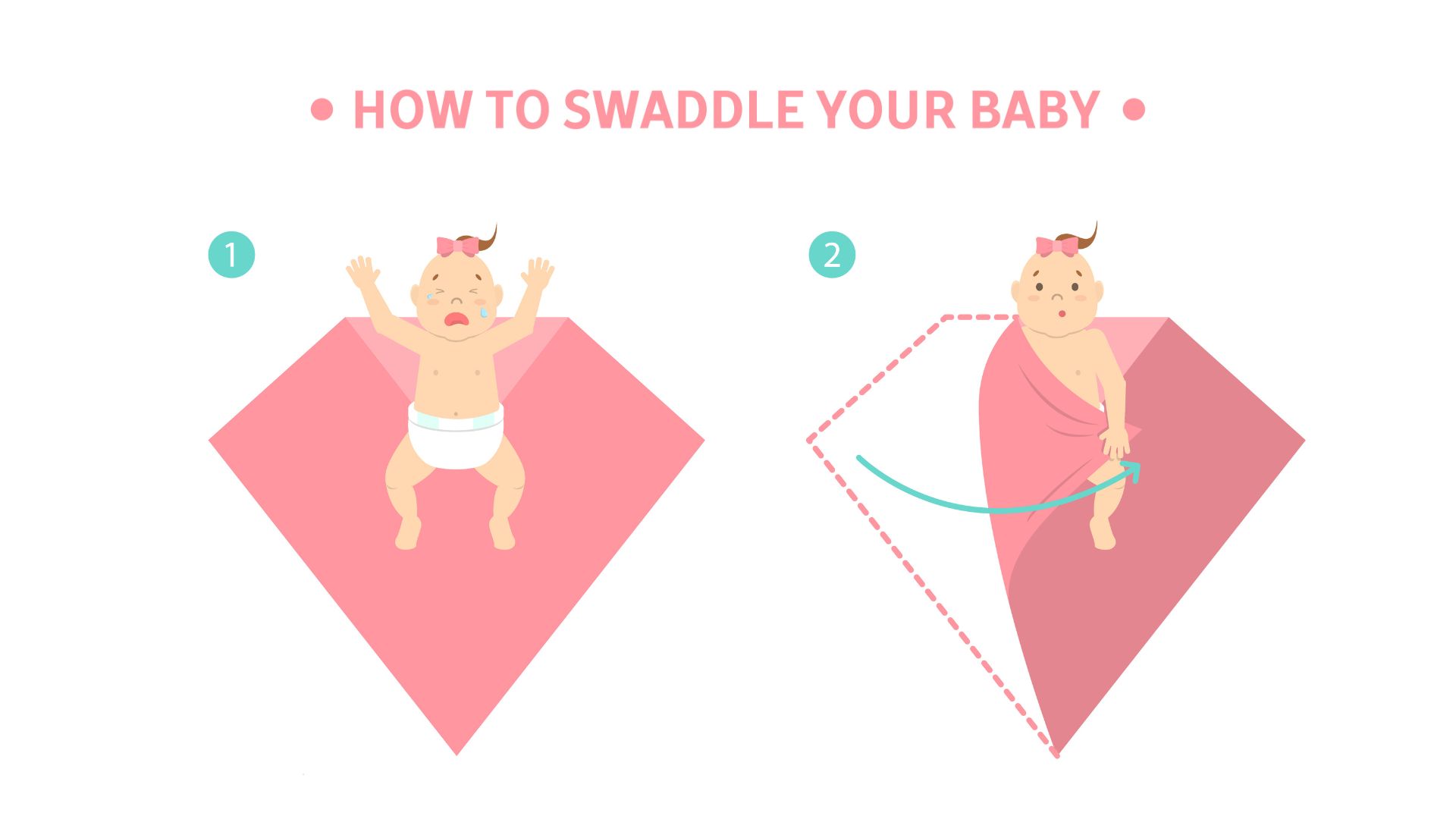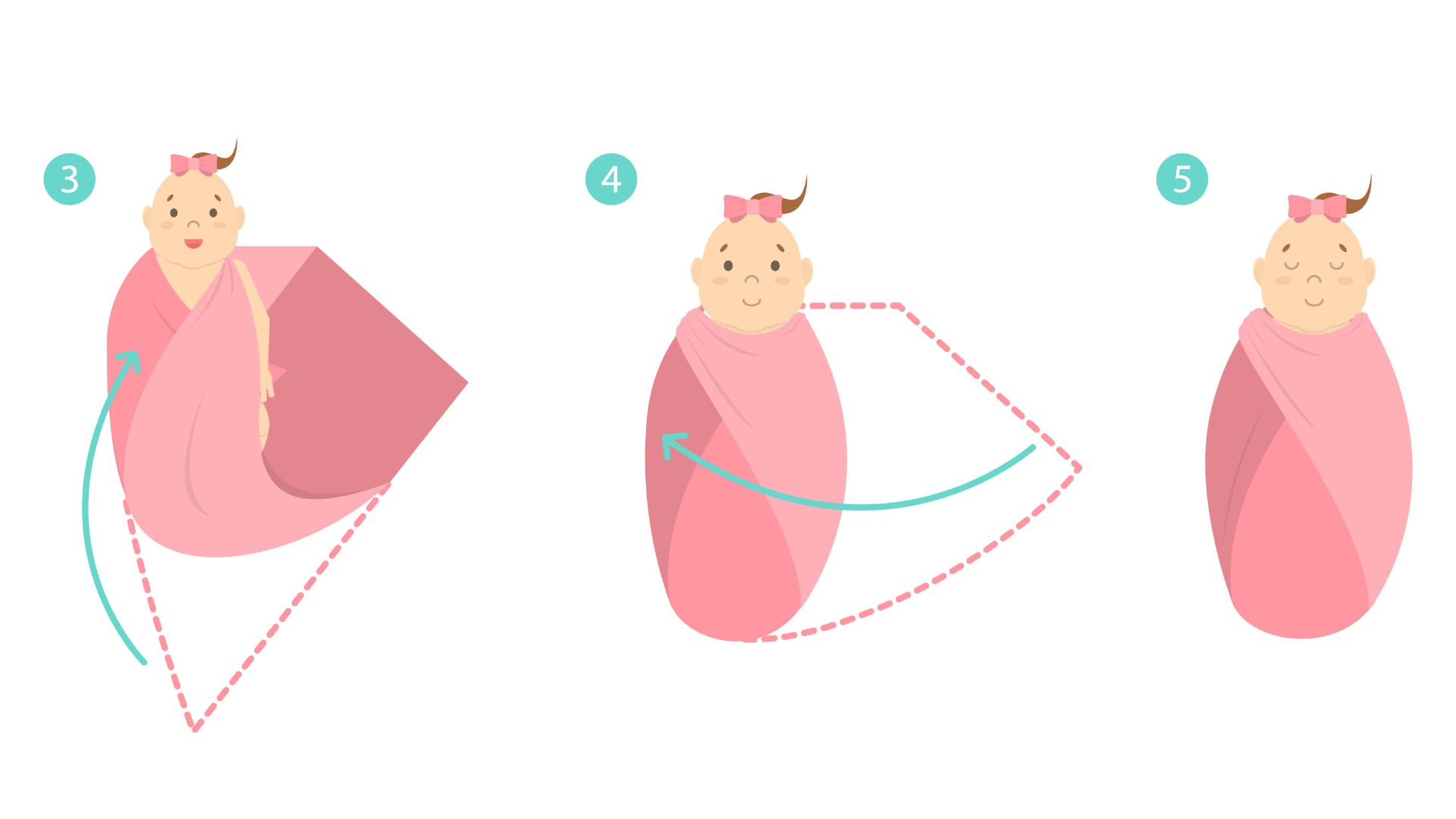How to swaddle a baby safely - top tips from the experts
Learn how to swaddle a baby with our expert advice

Learning how to swaddle a baby for the first time can be an overwhelming experience for some parents. As with all things new we learn for the first time, more so as it directly impacts your newborn baby.
You’ve probably heard older relatives talking about swaddles and wrapping babies up. There’s a reason for this. The practise is over 4000 years old and been soothing babies and getting them to sleep for generations. So much so that some people swear by using the best swaddles.
Andrea Grace specialises in baby sleep solutions. She explains, “Swaddling has been used for centuries to calm babies and help them to sleep. As with all traditional methods of baby care, they come in and out of fashion. Nowadays parents are more aware of the fourth trimester and a baby’s need to be held close during this time. Today’s parents are far less likely to be advised that they are ‘spoiling’ their babies by holding them too much and there is possibly less of a need for a swaddle.”
In recent times however, some have been more reluctant to swaddle babies. In 2016 research suggested that swaddling could increase the risk of SIDS. But this thinking was quickly debunked, and it’s now thought by the American Association of Paediatrics that, as long done safely, swaddling doesn’t make Sudden Infant Death Syndrome (SIDS) any less likely but doesn’t increase it either.
How to swaddle a baby
Different types of swaddling can be used depending on your little one’s needs, which often change during the first few weeks as they grow and develop. Here, we look at three of the most popular techniques. Choosing the right blanket is pretty paramount. Use a lightweight blanket made of breathable material like cotton or muslin. Make sure the blanket is large enough to wrap the baby comfortably and securely.
The three swaddle techniques
- The arms out swaddle
- The 'burrito wrap' (as above)
- The 'simple swaddle'
Sleep expert and mom-of-four, Andrea Grace advises us to swaddle a baby like this:
How to do the burrito swaddle
- Spread out a square cotton baby flat-sheet in a diamond shape with a point at the top.
- Fold this top point down about a quarter of the cloth’s length to make a straight horizontal line.
- Lay the baby on the sheet face up, with their neck against the fold you’ve made.
- Pull the top left-hand corner across their body and tuck it behind their right arm, smoothly under their back.
- Pull the bottom right corner up and across to under their chin.
- Bring the bottom left corner diagonally over their right shoulder and tuck it in at the back.
- Now check that the swaddling is firm but not too tight and that baby’s face and head are uncovered.
- If a baby is wearing a vest and onesie, this is probably all the bedding they will need.


How to swaddle with arms out
- Lay the blanket on a flat surface, like a changing table or bed, with one corner pointing towards you. Fold down the top corner about 6 inches to create a straight edge.
- Place the baby on the blanket with their shoulders level with the folded edge. Make sure the baby's arms are out of the blanket and resting on their chest.
- Take the left corner of the blanket and tuck it under the baby's right arm and behind their back. Make sure the blanket is snug but not too tight.
- Fold the bottom of the blanket up over the baby's feet, tucking it under their chin.
- Take the right corner of the blanket and tuck it under the baby's left arm and behind their back. Again, make sure the blanket is snug but not too tight.
- Bring the remaining corner of the blanket over the baby's chest and tuck it under the fold near the left shoulder. The blanket should be snug but not too tight, allowing the baby to move their legs and arms freely.
Baby sleep expert Sarah Patel tells us; "Lots of parents opt for swaddling with arms out because it allows their baby to move their arms freely which they were used to doing in the womb. It can also mean better sleep for you and your baby because it allows your baby to suck on their hands and fingers which often means they can soothe themselves back to sleep. It is potentially also safer as your baby will be able to use their arms to roll."
GoodtoKnow Newsletter
Parenting advice, hot topics, best buys and family finance tips delivered straight to your inbox.
Dr. Rachel Moon, a pediatrician and a professor of pediatrics at the University of Virginia, supports swaddling. She tells us, "If you are going to swaddle, swaddle the baby with the arms out. That way, the baby can bring their hands to their face and self-soothe if they need to, and they can also move their arms and legs freely, which is important for development."
How to use the simple swaddle
The American Academy of Pediatrics (AAP), recommends swaddling with the arms out once the baby is able to roll over on their own, which typically occurs around 2-3 months of age. This allows the baby to move their arms and reduce the risk of overheating. In the UK, the National Health Service (NHS) also recommends swaddling with arms out. The NHS advises parents to "always place your baby on their back to sleep and never swaddle them above the shoulders. Leave their arms free so they can move them."
What is swaddling?
Swaddling is using a thin square of cotton or muslin to wrap a young baby up in a cocoon. It’s thought the feeling of security reminds babies of the womb. The close wrapping also limits a baby’s natural moro or startle reflex. This where a baby’s arms can fly out and jerk them awake.
Mom-of-two Sarah found swaddling led to better-rested babies. “I swaddled my daughter from birth as I read it would make baby feel more secure and minimise her disturbing herself with her startle reflex. It worked perfectly for both of our babies, they slept really well and for extended periods.” Swaddling is meant to be used for young babies. It becomes riskier once a baby can move or roll. Lesley Bland, a registered midwife from MyExpertMidwife says, “As soon as your baby shows signs of starting to roll themselves over you must stop swaddling them.”
What if my baby doesn’t like swaddling?
Obviously not all babies are the same. Some may not appreciate being swaddled, as Andrea points out: “It depends on the baby. Some babies enjoy the feeling of being held firmly, while others like more freedom of movement.”
Emma is a mom of one and started swaddling to help her baby’s startle reflex. “I tried swaddling because my baby just wasn’t sleeping. He would only sleep on me and would jerk awake every time I put him down. I used a swaddle suit rather than a wrap, so I just zipped him into it. It did seem to stop the reflex however, he seemed to get really agitated that he didn’t have access to his hands! He used his hands to soothe, so he found this frustrating.”
A sleep sack is an alternative to a swaddle. Sleep sacks can be used from birth, but it’s essential parents pick the right size and weight for their baby. Andrea explains: “A sleep sack should be the right size. If it is too big around the neck and armholes, the baby could potentially slip down into the sack. Too small and it will be uncomfortable and restrictive. No sleep sack or swaddle should come with a hood or cover a baby’s head, as this can cause them to overheat.”
Is swaddling safe?
If infant sleep guidelines are followed, then swaddling is a safe sleep practise. Advice form UK's leading sleep safety charity, The Lullaby Trust is to always keep baby’s body and the room temperature in mind when you dress them for bed.
Lesley from MyExpertMidwife reminds us, “If putting a swaddled baby down to sleep you must still follow safe sleeping guidelines by placing them feet to foot in their own space, clear of anything they can pull on top of themselves for example, pillows, toys, bumpers, blankets etc and always on their backs.”
How you wrap up a swaddled baby is key to safe sleep too. Andrea adds, “A swaddle should be thin and able to be secured firmly, but not so tight as to cause discomfort. There should be some freedom of movement around the hips to prevent developmental hip dysplasia.”
When to stop swaddling
Before your baby can roll over - so before 12 weeks old. Parents must be vigilant about their baby’s ability to move. Andrea adds, “Babies will learn how to roll over. When parents can see that this is about to happen, they should get rid of the swaddle. Babies need their arms free to roll both ways and to prevent them from getting stuck on their front.”
Related features:
- Best swaddles 2023: tried and tested by moms and babies
- Should I swaddle my baby? I'm a sleep expert and here's what I know
- How to get a baby to sleep
Video of the Week:

Jo is a freelance journalist, writing for newspapers, magazines and websites such as Good Housekeeping, Grazia, Mother & Baby, The Daily Telegraph, Daily Express, Daily Mirror, Bella, Yours and Woman&Home. Jo started out in entertainment journalism and has scurried up plenty of red carpets and interviewed stars such as Joan Collins, Dawn French, Jane Fonda and Julie Walters. These days, she mainly covers health, parenting, lifestyle and consumer news but is always keen to vent in an opinion piece or dust off her schmoozing skills and interview a celeb. When not writing (and reading) Jo loves to get outside, wear out her two sons on a beach, drink good coffee and expand her baking repertoire.